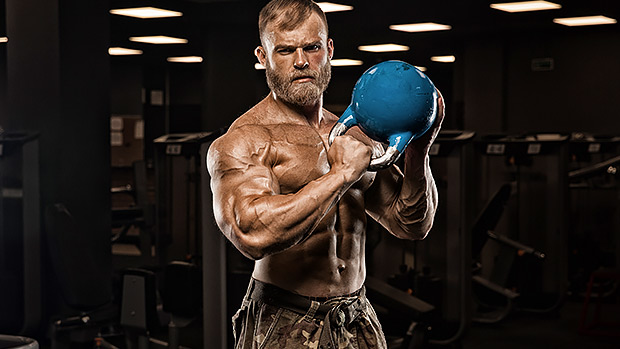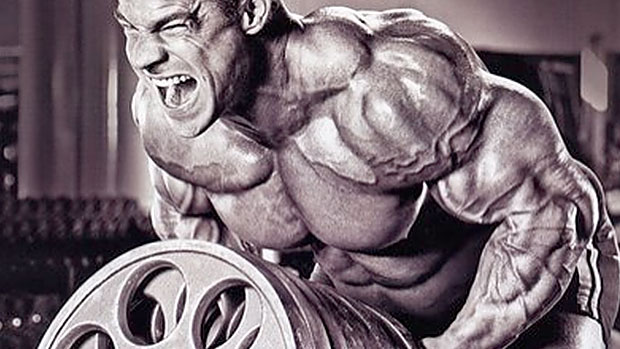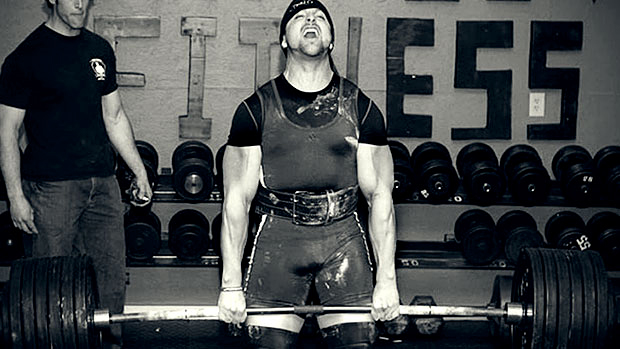The Problem With Presses
The barbell military press is a staple. But it's not a great fit for every lifter – especially those with shoulder issues.
Typically, the unilateral (one-armed) overhead press is a kinder alternative. And it's far more versatile than you think. Adjusting your position can quickly ramp up the difficulty of single-arm presses, making light weight feel heavy. That's a win for your joints.
If your traditional overhead pressing has gotten stale, give these variations a try.
The half-kneel reduces involvement of the lumbar spine. This limits the ability to cheat the press by leaning backwards or overarching. Get your front and back knees bent at 90 degrees, engage the core, and make sure the toes of your back leg are pulled up to the shin. Squeeze the glute of the trailing hip and pretend both legs are on parallel train tracks with the ankles, knees, and hips aligned. Create tension by pulling both feet together. Grip hard, keep your elbow aligned under the wrist, and eyes on the weight at all times.
These are similar to the barbell Z-press made famous by strongman Zydrunas Zavickas.
Having both legs in flexion will challenge thoracic extension, core stability, and the hip flexors while you maintain an upright posture.
This is a classic self-limiting exercise. You either maintain posture or you'll get stuck in the press. Cramping in the hips and quads can initially be common here.
The traditional barbell Sots press, named after Russian weightlifter Viktor Sots, is a challenge. This single-arm version is too... but not quite as much. If ankle mobility is a limiting factor, elevate your heels enough so you can access a thighs-parallel or deeper squat position.
Like the Z-press, it will demand an upright posture and thoracic extension. This will challenge your mid back and traps considerably.
Rotation in the upper back is fine during the movement as long as you keep your belly button facing forward throughout.
Now try accentuating the negative portion of it, like this:
If the single-arm Sots press is too difficult, you can lower the weight from that overhead squat position, raise up from the squat, and finish the press from the standing position.
Widen a regular half-kneeling stance and place your free hand on the ground as support. This is similar to what you'd do during the middle position of a Turkish get-up. Your forearm and wrist must be straight at all times. Keep your gaze focused on the weight.
Lower the weight by pulling your elbow toward your hip. Don't use a range of motion beyond what feels comfortable. This will be a weaker position than a regular overhead press, so be conservative with weight selection.
This move will help you learn to recruit your lats in the press and will challenge external rotation at the shoulder. Pressing with a bit of a sideways lean can also reduce discomfort on the AC joint in the shoulder since there will be less compression on the joint at lockout.
Remember, the shoulder is responsible for more than just pressing overhead. If you limit yourself to only traditional overhead work, you're leaving potential muscle and strength gains on the table.
The shin box position will challenge your hips' internal and external rotation, not to mention the core which will need to be stable to stay upright.
Leg drive is eliminated and the ability to cheat by overarching is reduced. This variant is a real surprise. Pressing from the same side as the internally rotated hip will help you find a solid rack position at the bottom. You'll easily be able to feel your lats here. This will create a nice groove to the press.
You can actually move some seriously heavy loads with this. It'll teach you to generate tension while your mobility is challenged. The key is to raise the weight not by pressing it, but by getting your body under it.
Begin with the weight at shoulder height in the rack position. Bend at the knees and hips to begin the squat. As you slowly descend, your arm should also straighten.
Ideally, the weight should stay at the same height as you squat down. This concept may take some practice. When you reach the bottom, raise up in an overhead squat and lower the weight back to the start while you stand. If you have the ankle mobility of a cadaver, just elevate your heels a bit to assist with the squat.
These variations require high tension and focus. Keep reps in the 1-6 range to maintain the quality of execution.
Why Kettlebells?
Kettlebell presses can be done bottoms-up style. This will greatly increase the need for stability since the grip must engage harder, which has a carryover effect to the rotator cuff.
As someone who's been through a shoulder operation, using kettlebells for presses just feels more comfortable now. That said, if dumbbells feel best for you, or if that's all you've got access to, then use them instead.
- Boyle, M. (2016). New functional training for sports (2nd ed.) Champaign: Human Kinetics.
- Delavier, F., & Gundill, M. (2012). The strength training anatomy workout 2. Champaign: Human Kinetics.





